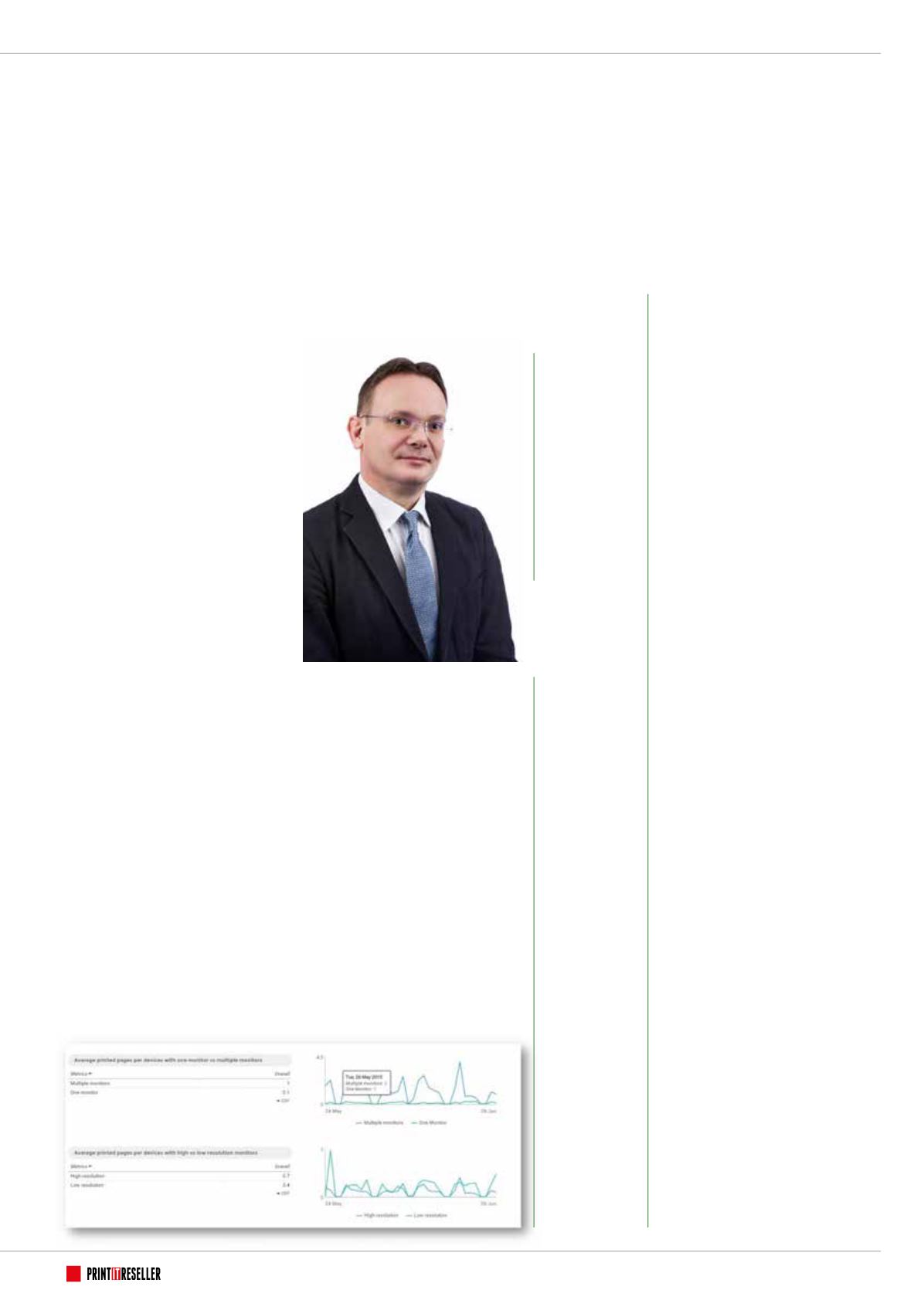
01732 759725
22
OPINION
Managing printing better represents
a significant opportunity for
organisations to save on operational
expenses estimated to be as much
as 5% of their IT budget. However,
controlling this cost is not without
its challenges, especially when it
involves changing the behaviour of
an IT savvy workforce.
Traditional approaches involve
controlling printing in a physical or a fiscal
way, saving paper and toner by changing
printers’ default settings to duplex and
draft quality; cross charging departments a
per page usage fee; automatically deleting
printer queues; and so called 'pull printing,’
requiring end users to key in a PIN code on
the printer itself to save wastage and add
a level of security.
The issue here is that all this is at
odds with an end user’s desire to print,
and it doesn’t address the core reason
of why people want to print, or provide
a reasonable alternative. This results in a
classic displacement effect as the problem
goes underground in the form of shadow
IT, a proliferation of personal printers and
the unintended consequence of higher
costs and less control.
Why print?
Why do people print at work? We see three
main use cases: printing to edit, printing to
read and printing to share documents.
Printing to edit:
an end user is in the
middle of editing a large document and it
becomes too cumbersome to track changes
and compare versions, so they decide to
print it out, glancing at the printed copy
whilst making changes on the screen.
Printing to read:
people print documents
because they prefer the clarity of reading a
hard copy.
Printing to share:
an end user is about
to go to a meeting and wants to make sure
everyone is on the 'same page', literally, so
they print out copies of their presentation
or of the document to be discussed for
every attendee at the meeting.
With the proliferation of mobile
devices, printing to share has become
less prominent. Today, it’s easy to bring a
phone or tablet to a meeting, but printing
to read and edit remain widespread.
Insight
End User IT Analytics is all about
monitoring the IT infrastructure from the
end user perspective and the insight it
Mark Boggia explains how end user analytics can help businesses reduce print
volumes without inconveniencing employees
You Spend
How Much on Printing?!
brings about how end users are really
experiencing IT, irrespective of what the
service desk is reporting.
One application of this technology
is in end user workspace design. The
operational data it provides, such as
workload trends and usage metrics about
how services are being consumed, enables
organisations to design optimal service for
a given use case.
When organisations have an IT
analytics solution in place, they start asking
questions such as ‘What metrics could we
use to better understand the relationship
between a particular workspace design
and printing behaviour?’.
Given the use cases of printing to read
and printing to edit, reasonable metrics
might include 'end users with more than
one monitor’ or ‘end users with a high
resolution monitor’ and ‘number of pages
printed per day’.
This is presented in one of the out-of-
the-box dashboards shown below.
What this dataset shows is that end
users who have either a second monitor or
a high resolution monitor print less than
those who don’t.
So armed with the insight and
knowledge gained from these analytics,
organisations can now construct a
solid business case to make a targeted
intervention (i.e. purchase additional or
new monitors for specific end users), and
do this with absolute certainty of both
reducing costs and improving the overall
end user experience.
Mark Boggia is Director Sales Engineering
Europe at Nexthink, a specialist in end
user analytics. He has over 20 years’ sales
experience in infrastructure software,
gained in start-ups, tier 1 software
vendors and channel partners. Based
in Nexthink’s UK office in Farnborough,
Mark is responsible for Nexthink’s sales
engineering team in Europe. Prior to
joining Nexthink, he was EMEA Director
of Solution Consulting at ServiceNow. He
has also held senior sales engineering
leadership positions at BMC Software and
Symantec. Mark holds a B.Sc. (Hons) from
Kingston University and an MBA from The
Open University.
Controlling
cost it is
not without
challenges,
especially
when it
involves
changing the
behaviour of
an IT savvy
workforce
Mark Boggia,
Director Sales
Engineering
Europe,
Nexthink


